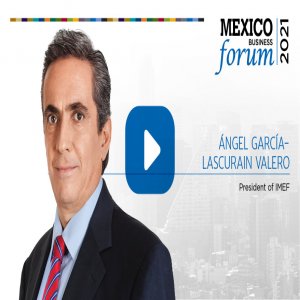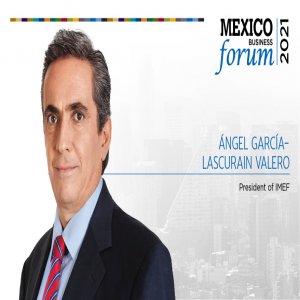
Evolving Beyond Mere Fun in Acapulco
Mexico’s image as a tourist destination has mainly centered around the idea of beach and sun. However, there is an enormous opportunity for the industry to grow beyond that and double the revenue it brings to the country, said Pablo Azcárraga, President of the National Tourism Business Council (CNET), at Mexico Business Forum 2018, held at the Sheraton Maria Isabel Hotel in Mexico City on Wednesday.
“Mexico is in a privileged position and has a great potential to grow in the tourism sector,” said Azcárraga. The country ended 2017 with a total of 39.3 million international visitors and over US$21 billion in tourism revenue. This leaves Mexico as the sixth-most attractive tourist destination, trumping regions such as Turkey and the United Kingdom with 2.4 times more visits than the average of the rest of the world. By the end of 2018, Azcárraga expects the country to receive over 43 million visitors and generate over US$22 billion in revenue.
This, however, does not reflect the true potential of the country as an investment destination. According to Azcárraga, 90 percent of the tourists who come to Mexico are looking for sun. “The country has failed to take advantage of its potential in cultural, medical, religious and other types of tourism,” he said. “The future of the industry is in the care for natural resources and in building destinations with more space per visitor.”
Mexico’s opportunity to grow its tourism sector is clearly mirrored in the visitors’ average spending when compared to other major international destinations. Azcárraga showed that for tourists who travel by plane, the average spending in Australia is over US$4,400, in the US over US$2,000 and in Thailand over US$1,500. In Mexico, that average is no more than US$900 and for tourists that travel by road or on water, the number goes below the US$600 mark. “The country should be at a level of at least US$1,500,” says Azcárraga.
Growing these numbers should be a priority for the new federal administration, according to Azcárraga, and during his presentation he outlined what he thinks should be the plan for the new government to help Mexico realize its true potential. “Although Mexico is the sixth-most popular destination, the country’s brand is currently ranked 55th,” he said. “We thought that good infrastructure alone would attract tourists but that is not the case. We need more investment.” Azcárraga highlighted the construction of NAIM as a key factor for boosting not only tourism but all economic activities in the country. In addition, he sees security as a main concern that should be addressed in all tourist destinations.
In terms of regulation, Azcárraga said there should be better regulation of the collaborative economy. “Uber, Airbnb and digital tourism agencies have become industry disruptors,” he explained. “However, these players do not contribute economically to the country and do not participate in the promotion of tourist destinations.”
Azcárraga is positive about the future of the industry but sees three possible scenarios in Mexico’s future. “Our most conservative forecast is that Mexico will maintain the same levels of visitors and revenue in the next six years. However, there is a more negative scenario where NAFTA negotiations and deteriorating relations with the US could take us back to industry levels of 20 years ago when the country received only 20 million visitors per year,” he said. In the best-case scenario, though, Azcárraga sees an opportunity for Mexico to receive 61 million visitors, generating US$46 billion in revenue and contributing over 10 percent of the national GDP.
CNET has already approached all the presidential candidates to transmit the industry’s concerns regarding the tourism sector but Azcárraga said that only Ricardo Anaya and José Antonio Meade have responded to the invitation. “We think both candidates recognize the importance of tourism for the Mexican economy and although we have not met with him, we hope Andrés Manuel López Obrador does not apply his populism to the tourism sector. Tourism and populism cannot mix,” he said.
















